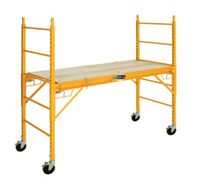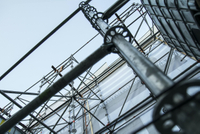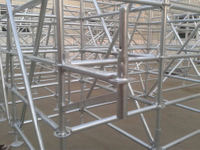Content Menu
● Introduction to Ringlock Scaffolding Components
● Key Components of Ringlock Scaffolding
● How Ringlock Scaffolding Components Work Together
>> 1. Standards and Rosettes
>> 2. Ledgers and Wedge Pins
>> 3. Braces and Swivel Cast Ends
>> 4. Base Jacks and Base Collars
>> 5. Locking Rings and Wedge Pins
● Assembly Process of Ringlock Scaffolding
● Safety Considerations
● Applications of Ringlock Scaffolding
● Comparison with Other Scaffolding Systems
● Case Studies
● Advanced Applications
● Environmental Considerations
● Future Developments
● Conclusion
● FAQ
>> 1. What are the Main Components of Ringlock Scaffolding?
>> 2. How Do Ringlock Scaffolding Components Interact?
>> 3. What are the Advantages of Ringlock Scaffolding?
>> 4. Where is Ringlock Scaffolding Commonly Used?
>> 5. What Safety Considerations Should Be Taken When Using Ringlock Scaffolding?
● Citations:
Ringlock scaffolding components are designed to work together seamlessly, providing a stable and secure working platform for various construction projects. This article will delve into the roles of each component, how they interact, and the benefits of using ringlock scaffolding systems.
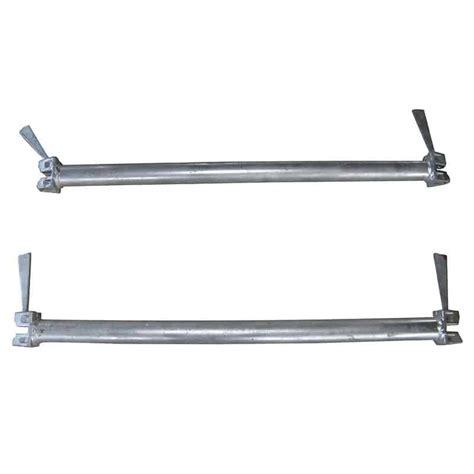
Introduction to Ringlock Scaffolding Components
Ringlock scaffolding is a modular system consisting of several key components, including standards, ledgers, braces, base jacks, and locking rings. These components are engineered to provide a strong and versatile scaffolding structure that can be easily assembled and disassembled.
Key Components of Ringlock Scaffolding
- Standards: Vertical posts with rosettes for connecting ledgers and braces.
- Ledgers: Horizontal beams that connect standards.
- Braces: Diagonal or horizontal supports for stability.
- Base Jacks: Adjustable bases for leveling the scaffolding.
- Locking Rings: Secure connections between components.
How Ringlock Scaffolding Components Work Together
1. Standards and Rosettes
Standards are the vertical posts that form the framework of the scaffolding. They feature rosettes at regular intervals, which are circular connectors with multiple holes. These rosettes allow for the attachment of ledgers and braces, providing flexibility in the scaffolding design.
2. Ledgers and Wedge Pins
Ledgers are horizontal beams that connect the standards, providing structural stability. They have a cast end with a captive wedge, which securely locks into the rosette on the standard. This connection prevents loose components and ensures a stable platform.
3. Braces and Swivel Cast Ends
Braces are diagonal or horizontal supports that enhance the rigidity of the scaffolding structure. They have swivel cast ends with captive wedges, similar to ledgers, which connect to the rosettes on the standards. This provides additional stability and prevents the scaffolding from swaying.
4. Base Jacks and Base Collars
Base jacks are adjustable components used to level the scaffolding on uneven surfaces. They are typically connected to base collars, which provide a stable foundation for the vertical standards. This ensures that the scaffolding remains secure and stable under various working conditions.
5. Locking Rings and Wedge Pins
Locking rings are not a separate component but refer to the mechanism by which ledgers and braces are secured to the standards using wedge pins. This locking mechanism ensures that all components stay in place, providing a secure working platform.
Assembly Process of Ringlock Scaffolding
The assembly process involves several key steps:
1. Site Preparation: Clear the area and ensure the ground is stable.
2. Base Assembly: Lay out base plates and insert vertical standards.
3. Ledger Placement: Connect ledgers to standards using wedge pins.
4. Brace Installation: Add diagonal braces for stability.
5. Platform Installation: Place platforms on top of ledgers.
6. Railings and Safety Features: Install guardrails and other safety measures.
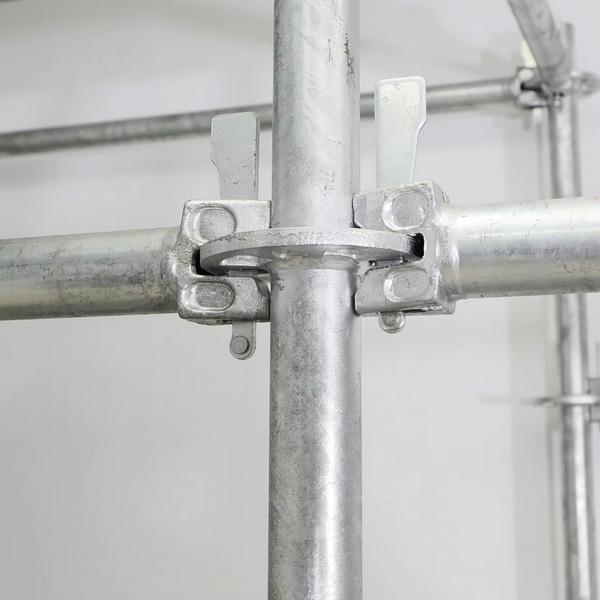
Safety Considerations
Safety is paramount when using ringlock scaffolding. Ensure all components are in good condition, follow proper assembly and disassembly procedures, and maintain a safe distance from power lines.
Applications of Ringlock Scaffolding
Ringlock scaffolding is widely used in various construction projects, including:
- Residential and commercial buildings
- Infrastructure projects (roads, bridges)
- Industrial settings (shipyards, petrochemical plants)
Comparison with Other Scaffolding Systems
Ringlock scaffolding offers several advantages over traditional systems like tube and clamp scaffolding. It is faster to assemble, more versatile, and requires fewer components, which reduces costs and labor time.
| Feature | Ringlock Scaffolding | Tube and Clamp Scaffolding |
| Assembly Time | Faster | Slower |
| Versatility | Higher | Lower |
| Load Capacity | Superior | Lower |
| Maintenance | Lower | Higher |
| Cost | Lower | Higher |
Case Studies
Ringlock scaffolding has been successfully used in numerous projects worldwide, including large-scale construction sites and complex architectural designs. Its versatility and efficiency have made it a preferred choice for many contractors.
Advanced Applications
Ringlock scaffolding can also be used for specialized applications such as shoring support, facade platforms, and access towers with stairs. This versatility makes it suitable for a wide range of construction needs.
Environmental Considerations
The durability and low maintenance requirements of ringlock scaffolding reduce waste and minimize environmental impact. The hot-dip galvanized finish ensures that the scaffolding can withstand harsh weather conditions without corroding.
Future Developments
As construction technology advances, ringlock scaffolding continues to evolve with new materials and designs. Innovations in steel and aluminum alloys are expected to further enhance its strength and durability.
Conclusion
Ringlock scaffolding components work together to provide a stable, secure, and versatile scaffolding system. By understanding how each component interacts, users can efficiently assemble and utilize ringlock scaffolding for various construction projects.
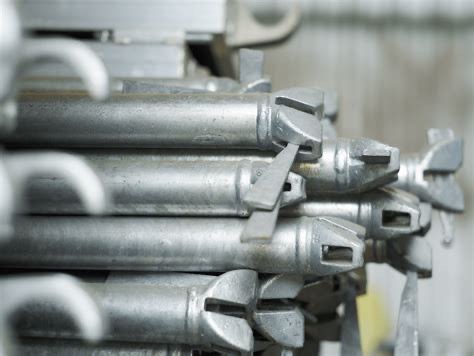
FAQ
1. What are the Main Components of Ringlock Scaffolding?
The main components include standards, ledgers, braces, base jacks, and locking mechanisms.
2. How Do Ringlock Scaffolding Components Interact?
Components interact through rosettes and wedge pins, providing a secure and stable connection.
3. What are the Advantages of Ringlock Scaffolding?
Advantages include faster assembly, higher versatility, superior load-bearing capacity, and lower maintenance costs.
4. Where is Ringlock Scaffolding Commonly Used?
It is commonly used in residential and commercial construction, infrastructure projects, and industrial settings.
5. What Safety Considerations Should Be Taken When Using Ringlock Scaffolding?
Safety considerations include ensuring all components are in good condition, following proper assembly and disassembly procedures, and maintaining a safe distance from power lines.
Citations:
[1] https://www.ekscaffolding.com/ringlock-scaffolding.html
[2] https://www.ringlock.co.nz/setting-up-ringlock-scaffolding-including-best-practice-summary/
[3] https://www.zh-scaffolding.com/news/what-are-the-components-of-ringlock-scaffolding.html
[4] https://www.ajbuildscaffold.com/the-comprehensive-guide-to-erecting-ringlock-scaffolding
[5] https://www.ekscaffolding.com/The-Role-of-Ringlock-Scaffolding-Base-Collar-id41810937.html
[6] https://vivablast.com/new/components-of-ringlock-scaffolding/
[7] https://www.doka.com/en/system-groups/doka-working-scaffold-systems/working-scaffolds/ringlock/ringlock
[8] https://www.scaffolding.hk/?m=home&c=View&a=index&aid=107
[9] https://www.sucoot.com/e-catalog/pdf/d2.pdf













